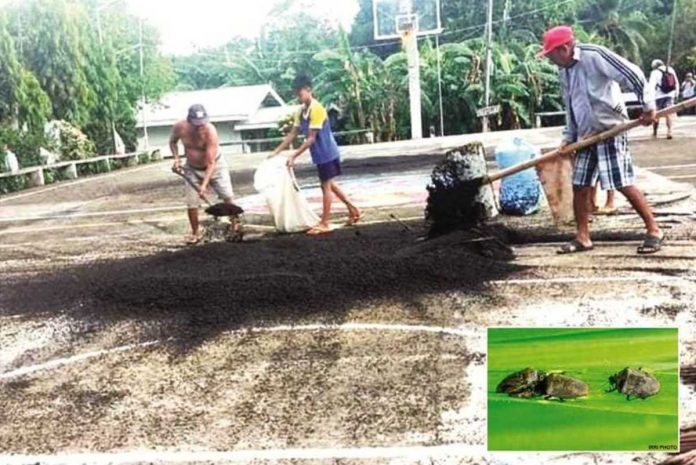
ILOILO – Seven towns in the province reported sightings of rice black bugs – Dingle, Janiuay, Cabatuan, Banate, Calinog, Pototan, and Concepcion.
The Provincial Agriculture Office (PAO) is still determining the extent of damage in their rice fields, said Gov. Arthur Defensor Jr.
Only Dingle, Janiuay, Cabatuan, and Banate have so far reported damages.
Of the 655.75 hectares of standing crops in these four towns, 0.6 hectare or 6,000 square meters are affected, based on initial reports.
Meanwhile, the towns of Calinog, Concepcion and Pototan have no standing crops, which is why there is no reported damage.
According to the PAO, “the affected area is not considered severe at the moment, but could expand further due to the pest prolific characteristics considering that the full moon will be this June 4.”
Defensor has yet to determine the amount of assistance the provincial government will extend because the PAO is still consolidating damage reports.
Earlier, PAO chief Dr. Ildefonso Toledo said rice black bugs attack the rice plant when it is still at an early stage up to the maturing stage by sucking out the sap and causing the plant to wither.
The International Rice Research Institute suggests the following to determine if rice plants are being attacked by rice black bugs:
* Check leaves for discoloration. Black bug damage can cause reddish brown or yellowing of plants. Leaves also have chlorotic lesions.
* Check for decreased tillering. Bugburn symptoms show wilting of the tillers with no visible honeydew deposits or sooty molds.
* Plants are also stunted; and can develop stunted panicles, no panicles, incompletely exerted panicles, and unfilled spikelets or whiteheads at the booting stage.
* Check for deadhearts.
Deadhearts can also be caused by stemborer. To confirm the cause of damage, pull infected plants. In black bug damage, infected plants cannot be pulled at the bases.
Heavy infestation and “bug burn” is usually visible after heading or maturing.
According to Toledo, farmers can do two things to eradicate rice black bugs.
First is the setting up of high-wattage lights to attract rice black bugs, or “light trapping”. Once the rice black bugs gather, put them in a sack and bury them.
Light trapping of insects should start five days before and after the full moon, experts recommend. Use 2,000 to 3,000 watts or super light during outbreaks and set them up every night to obtain the most bugs.
Effective light trapping is from 8 p.m. to 12 midnight, according to experts.
Toledo does not encourage spraying insecticides or pesticides.
“I’m not encouraging nga magamit sang insecticides and pesticides kay ang aton friendly insects madala man nga magkalamatay, indi lang rice black bugs,” the PAO chief explained.
Second, irrigate the field so that the rice black bugs escape and their eggs are less likely to survive.
Toledo is also pushing the farmers to synchronize planting so that the rice black bugs will have nowhere to transfer to.
But he admitted it will be difficult to implement synchronized planting because most of the rice fields are rainfed.
Toledo hopes that once the Jalaur River Multi-purpose Project Stage II is completed, farmers can synchronize planting because there would be enough water for irrigation. (With reports from PhilRice, IRRI, topbest.ph)/PN



